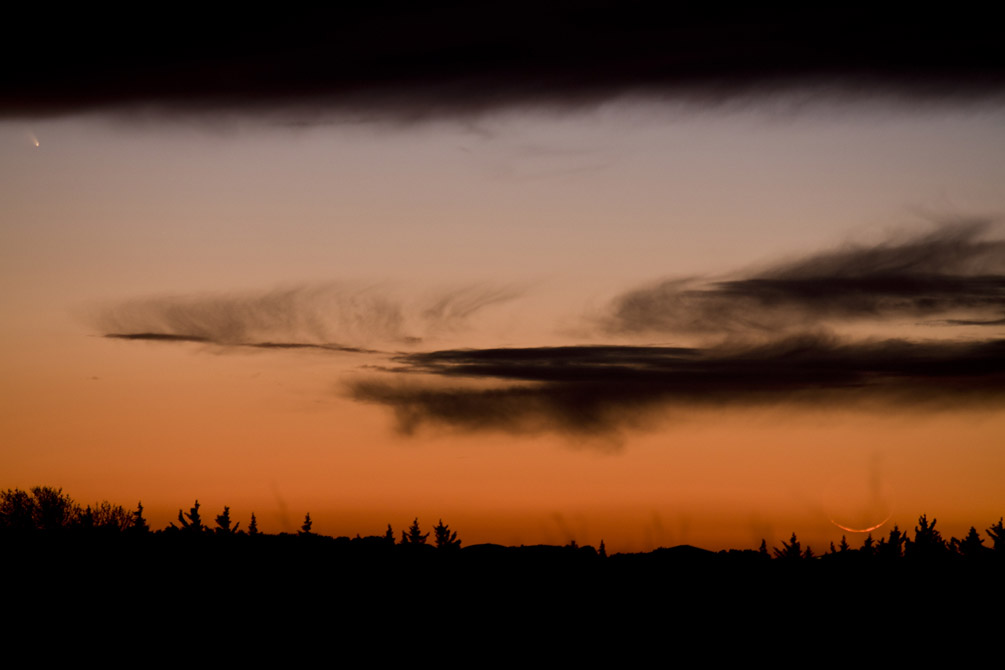March 13, 2013
A Miss This Time

image by Philippe Tosi, France
Like boxers in opposite corners, the Moon and Comet PanSTARRS are at the edges of Philippe's image. The comet was brighter a day or so earlier but I was clouded out. The connection between comets and the Moon is straight-forward. Over time some significant number of lunar craters must have been created by comet impacts, but we really can't identify any with certainty. One early proposal was ray craters resulted from such collisions but all impacts are thought to create rays, which erode away in a billion years are so. The average impact velocity of comets is higher than for asteroidal fragments but that simply means that a larger crater is created than for a slower projectile of the same size. One remarkable thing that cosmochemist have been able to do occasionally is to identify the composition of the crater-forming projectile by tell-tale chemical signs. But the water ice of a comet would presumably vaporize and not be deposited as minerals in the ejecta, and we are not really sure what the rocky parts of comets are made of so could not identify them. But the Moon and comets both are special features in the night sky. But comets are rarely around, while the Moon is much more faithful.
Chuck Wood
Technical Details
March 12, 2013. Canon 300 mm F/2.8 EOS 5DMII lended by HDRsoft 800 iso. 3.2 sec exp.
Yesterday's LPOD: Looking Sideways
Tomorrow's LPOD: A Pope's Present
COMMENTS?
Register, Log in, and join in the comments.



